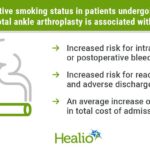October 01, 2025
2 min read
Key takeaways:
- In an adjusted model, there was a significant link between long-term PM10 exposure and apnea-hypopnea index.
- Researchers found significant variability in the estimates for the association by region.
As 1-year average exposure to particulate matter with a diameter of 10 μg or less rose, apnea-hypopnea index worsened among patients with obstructive sleep apnea, according to data at the European Respiratory Society International Congress.

Martino F. Pengo
“As this was a cross-sectional study, we cannot imply causation between air pollution exposure and OSA severity,” Martino F. Pengo, MD, PhD, associate professor at the University of Milano-Bicocca and clinician at Istituto Auxlogico Italiano IRCCS, told Healio.

As 1-year average exposure to particulate matter with a diameter of 10 μg or less rose, apnea-hypopnea index worsened among patients with obstructive sleep apnea, according to study data. Image: Adobe Stock
“However, given the pathophysiological aspects that link these two entities, perhaps clinicians should consider also the degree of air pollution exposure as a potential additional risk factor in the evaluation of patients with suspected OSA,” he said.
Using patient data from the European Sleep Apnea Database (ESADA), Pengo and colleagues assessed 19,325 patients (mean age, 54.6 years; 30% women; BMI, 32.1 kg/m2) with OSA from 14 countries in Europe to determine how OSA severity is linked to 1-year daily moving average exposure to PM10.
PM10 data were obtained from Copernicus Atmosphere Monitoring Service, according to the poster.
To gain insight on OSA, researchers measured apnea-hypopnea index (AHI; mean, 33.2 events/hour), oxygen saturation (SpO2; mean, 92.5%) and time spent with SpO2 less than 90% (mean, 48.2 minutes) during a sleep study.
In a linear multilevel regression model adjusted for age, sex, BMI, smoking history, season, humidity and temperature, the poster reported a significant link between long-term PM10 exposure and AHI but not between long-term PM10 exposure and SpO2 or time spent with SpO2 less than 90%. Notably, as long-term PM10 exposure rose by 1 unit, AHI increased by 0.41 events/hour (95% CI, 0.21-0.67).
Researchers further found significant variability in the estimates for the association between PM10 exposure and OSA severity by study site, and Pengo told Healio this was a surprising discovery. The intensity and impact of the association differed by region, with strong associations found in Lisbon, Portugal (6.32; 95% CI, 3.06-9.58), Paris (2.43; 95% CI, 0.68-4.18) and Athens, Greece (2.35; 95% CI, 0.7-4), according to the poster.
“Although regional variations were not documented, the prior data indicated that air pollution was generally linked to the severity of OSA,” Pengo said. “Because European centers were a part of the ESADA project, we were able to capture a substantial diversity in the association, meaning that while it is not significant in certain European nations, it is fairly high in others.”
Looking ahead, Pengo said future studies examining the relationship between these two factors should have a more diverse population.
“Furthermore, it would be interesting to investigate, particularly in cities where the association was strong, whether interventions aimed at reducing air pollution can have also an impact on OSA severity,” Pengo told Healio.
For more information:
Martino F. Pengo, MD, PhD, can be reached at pulmonology@healio.com.









